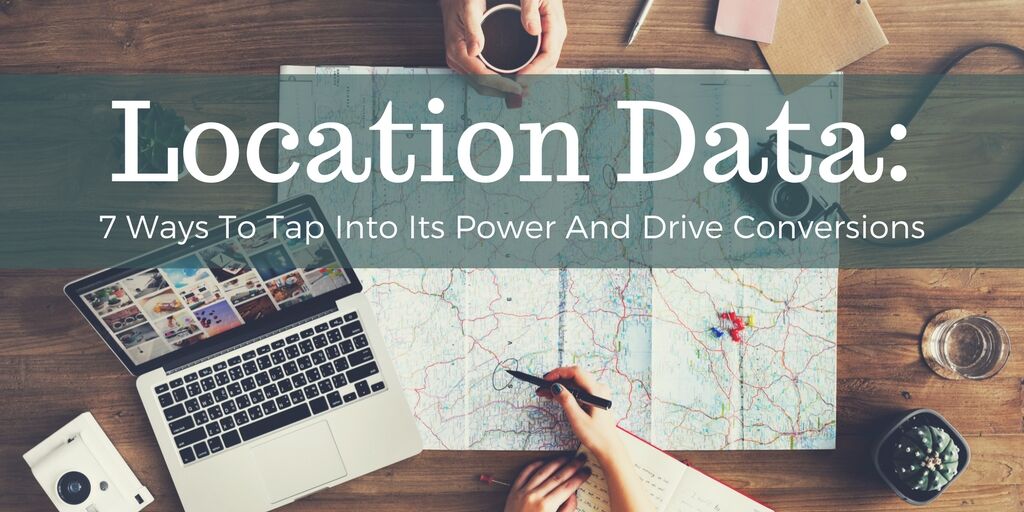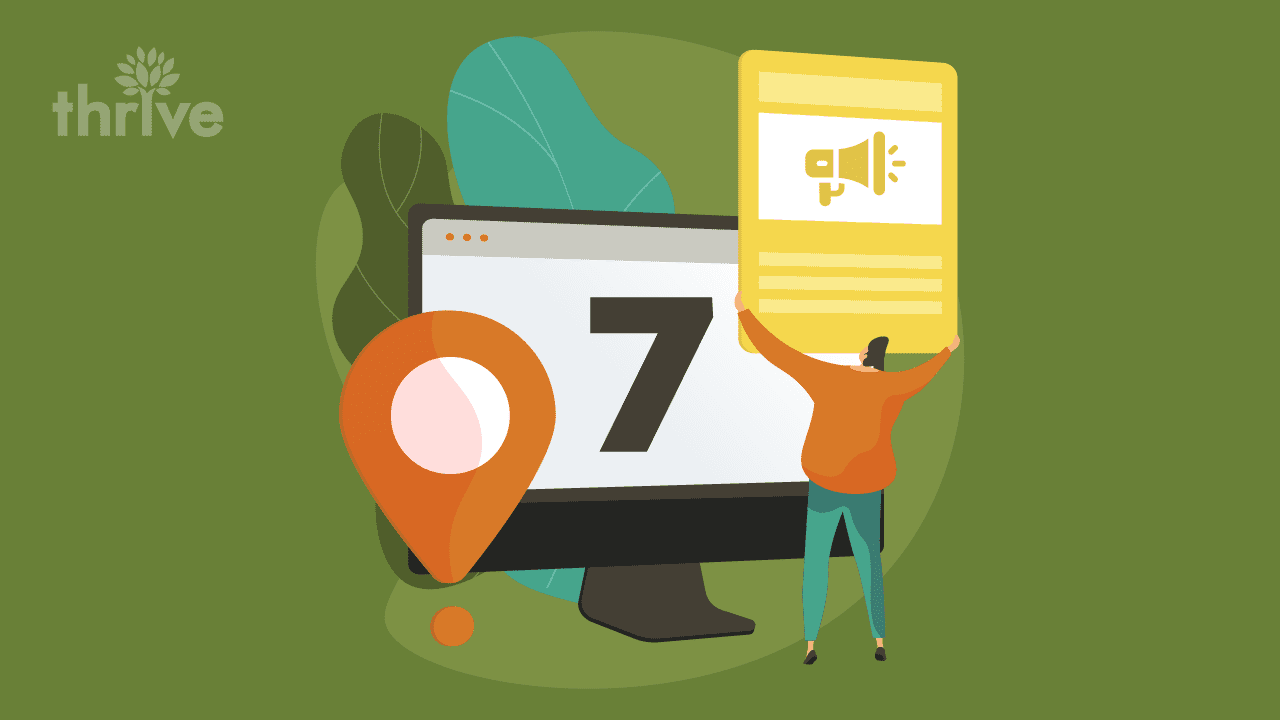
For leading online marketers, location data has become the core of strategy development. Why? Because location patterns are the key to being able to track consumer behavior in real-time, and target them based on relevancy.
We live in a world where everyone is seeking instant gratification. We want results now, we want products now and we want information we can use, right now. Users engage more when the message they receive is creative, dynamic and readily useful.
The Stats
Developing a relationship between your brand and your audience is highly important. Geo-targeting allows businesses to learn more about their audience in order to present products and solutions that match their needs, wants and interests.
According to The Internet Advertising Bureau, location-based advertising is seen as an ‘exciting opportunity’ for 66% of marketers. And 77% of marketers agree location based data is valuable, with 48% saying they are interested in using it to drive sales.
Location advertising works best on the mobile platform as messages targeted towards geographical location are time-sensitive. According to Thrive Analytics, 60% of customers use mobile devices to search for products and services. Further, they are ‘on-the-go’ 40% of the time when doing so.
What Exactly Is Location Data Marketing?
As social media continues to evolve, ‘location’ is becoming an increasingly significant part of it. We ‘check-in’ to places we are visiting or eating at. We share our location live with friends on various channels. Our Instagram photos are tagged with the location they were taken. Various Apps help us find businesses near our current location, etc.
Location data uses IP internet addresses connected to our personal devices to detect our locations, patterns, behaviors and interests. It allows businesses to tailor their advertising strategy based precisely on where the target audience is geographically. Knowing where customers work and live, and how they behave allows marketers to be personal and relevant with their messages.
Do you ever get that eerie feeling that someone is watching you? Well, they are. Lots of people are. Creepy? Yes. But you can also be grateful on some level.
While it may seem a little weird, advertisers have a good reason. They do this is because, rather than constantly stuffing your inbox and news feed with information that is useless and random, they want to show you what is actually relevant to you and your lifestyle. And it works.
How Does It Work?
You’re walking down the street, it’s nearly lunch time. A new restaurant has just opened up within a couple blocks of your current location. Suddenly you receive an ad in your inbox with their lunch specials and you’re inspired to check it out. You’ve just been the target of location data marketing.
To take it a step further, not only are these advertisers watching you today, but they’ve been doing it for weeks, maybe even months. They want to know where you are, where you’ve been, where you live and where you work to further engage you with potential buying opportunities.
Based on this information, they know you work close by and you’ve been hitting up a different place for lunch every day for the past few weeks, always within a few blocks of here. AKA: you don’t have a ‘spot’ that you’re currently loyal to and you’re always in this area at this time.
The relevancy just increased a little more. You see, the more information advertisers have, the more they can really pinpoint the audience they want to target. The real value in location data is not just in knowing where someone is right now, but in building an audience profile based on their behaviors over time.
The concept is simple: anyone who you know is currently near your business’s location is a more relevant target than someone who’s location you’re unaware of. So rather than being concerned about people-watching, ask yourself: why would a business not capitalize on this?
7 Tips to Maximize Your Location Data Marketing Results
Have you decided that location data could be a beneficial tool for your business’s marketing strategy, or simply want to improve your current one? Here are a few tips.
-
Set Specific Goals
Before you jump into location data marketing, take a step back and figure out what it is exactly that you are trying to accomplish. Do you want to sell more of a specific product, promote a current special, get more people into your store, or acquire repeat customers? While your answer may be “yes” to all of these, in order to be effective with your marketing, you need to be specific when it comes time to deliver the message to a prospect.
-
Choose a Venue Which Inspires Specific Wants or Needs You Can Fulfill
Different types of locations attract certain types of people. For example, a university is primarily filled with people from the ages of 18-25, generally with a low income. A Justin Beiber concert is going to attract younger female fans, for the most part, whereas a Beatles comeback tour will appeal more to the baby boomer generation. Your venue will define your audience – use this to your advantage.
-
Define a Specific Radius and Timeframe
Set a defined perimeter around a specific location where ads can be dropped. This is a great way to ensure your messages are not going to waste. Geo-fencing perimeters can be locational or time-based, or, better yet, both. For example, if a restaurant is trying to boost its lunch sales, it might be beneficial to deliver ads around that time and within walking distance to their location.
-
Use Search History to Predict Locations of Your Target Audience
People search the web for topics which interest them, issues they have, or products they seek. Tapping into this information allows you to target your ads effectively based on interest, or intent, even if the target’s current physical location doesn’t match up.
-
Use Data to Analyze Past Behavior and Preferences – Track Everything
We all have somewhat of a routine and reoccurring preferences. Whether it is where we work, what types of food we eat, the genre of movies we watch, what types of things we purchase, and from where. This information provides valuable insight for marketers with which to create ads from. Again, this is all about relevancy – the more you know, the more relevant you can be with your ads.
-
Be Sure Your Landing Page is Customized
Having a customized landing page is absolutely crucial for marketing in general, whether it is through location tracking or not. Say you deliver the ad to a user who is intrigued and clicks through to your website. If the landing page doesn’t deliver what they were hoping for, the conversion will be lost. Create multiple landing pages for each ad that line-up with the reason for the target.
-
Test and Re-Test
Targeting ads effectively requires a lot of work, and you probably won’t get it exactly right the first time. Analyze your results, try new things and develop a strategy over time based on this data. Tapping into your own reporting and analytics and optimizing your campaigns accordingly is a tried-and-true marketing best practice.
Remember, when marketing, we can only work with the information we have. The more we know, the greater our potential to deliver ads that generate real results. Be sure to use this knowledge wisely. Targeted ads which are personalized, timely and relevant are the key to success when tapping into location data.
When using location data for your ad strategy, be sure to factor in all the information you have. Put the time and effort into understanding your target demographic, the demand for what you’re offering, and the best ways to customize your message. It’s all about value – no one wants to give away their information for free. However, if you’re prepared to offer experiences and engagement that provide real value, the willingness to share will be there.
Do you want to learn more or need help with your location data advertising efforts? Thrive Internet Marketing is here to help. Our experts are the leaders in internet and mobile marketing. Contact us today!
